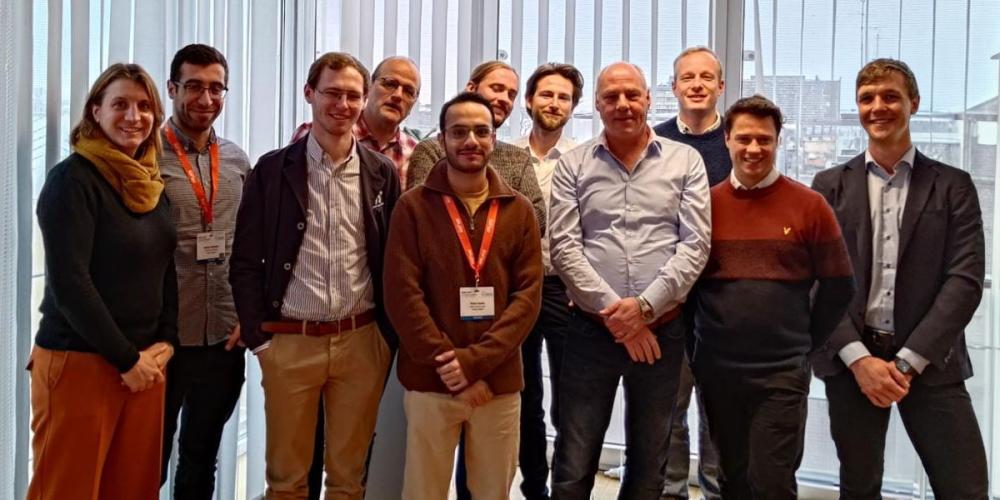
Researchers Maarten Kuijk and Hans Ingelberts of the Vrije Universiteit Brussel are leading the international European consortium CoDaFlight (Colouring the Dark in Fluorescent light). The consortium’s aim is to lay the foundation for the use of fluorescence lifetime imaging in medical procedures such as image-guided surgery and monitoring disease-related processes. The work is based on an innovative camera that can capture the lifetime of fluorescence in order to characterise tissue in situ.
Until now, near-infrared fluorescence imaging has mainly been used in research, but it allows processes in the body to be visualised in real time. The CoDaFlight researchers are attempting to obtain real-time information from areas of the body that medical imaging is currently unable to display adequately. This could lead to a new diagnostic tool that can be used in surgery and other interventions.
In the first phase, the team built a concept instrument based on an innovative sensor developed at VUB by Hans Ingelberts. They are now excited about the opportunities that could emerge over time.
“With CoDaFlight, we want to convert the technology into an instrument and test it in a pre-clinical environment,” says Ingelberts. “Scientists and partners in the consortium will carry out parallel and integrated research using a multidisciplinary, holistic approach. This covers many fields, from the development of semiconductor image sensors, to models and algorithms, to fluorescent contrast agents.”
“One of the important tasks in CoDaFlight is the preclinical validation of the new imaging concept. The collaboration with Prof Sophie Hernot, head researcher of the VUB core facility for molecular imaging, is essential to this. We want to demonstrate and document how the concept works for clinical issues in oncology and dermatology,” says Rik van Heijningen, VUB project manager. “The insights from these studies will contribute to the meaningful use of this innovative imaging technology for disease treatment, such as making cancer cells more visible, as well as other physiological changes such as in pH and tissue oxygen content. Later, other biomedical applications can be developed with clinicians.”
Thanks to its extensive capabilities, CoDaFlight brings together electronic and photonic scientists, software and biomedical engineers, physicists, chemists, medical scientists and doctors, each with complementary expertise. In total there are five partners: the German Universitätsmedizin Göttingen with Prof Frauke Alves, the Greek FORTH with Dr Giannis Zacharakis, the French Université de Bourgogne with Prof Franck Denat, the Norwegian Universitet i Bergen with Prof Emmet Mc Cormack and the Vrije Universiteit Brussel with Prof Maarten Kuijk and Dr Hans Ingelberts as project coordinator and Prof Sophie Hernot responsible for pre-clinical validation.
The project received €3 million in funding from the HORIZON-EIC-2021-PATHFINDEROPEN programme and is further directed by the EU EISMEA office in Brussels.